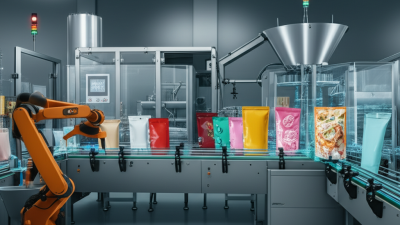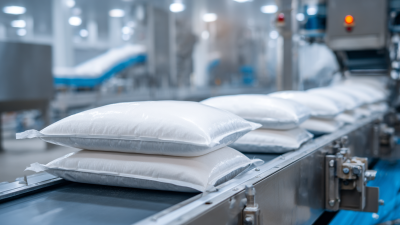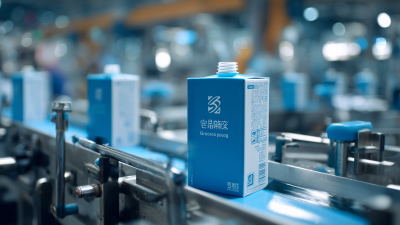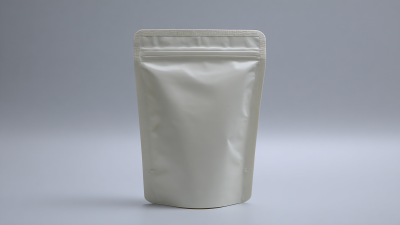- Phone:+86 15218629499
- Phone: +86 15766990063
- E-mail: Yzprinting01@163.com
The packaging industry is undergoing a significant transformation, driven by technological advancements and changing consumer preferences. Among the most promising innovations is pouch packing, a versatile and eco-friendly solution that has garnered substantial attention.
 According to a report by Smithers Pira, the global pouch packaging market was valued at approximately $45 billion in 2020 and is projected to grow at a compound annual growth rate (CAGR) of 6.8% through 2025. This growth can be attributed to the demand for lightweight, resealable, and convenient packaging options. Furthermore, the adoption of smart packaging technologies, such as QR codes and augmented reality, is set to enhance consumer engagement and provide real-time product information. As we delve into the future of pouch packing, it is essential to explore these innovations and understand their impact on sustainability, efficiency, and market trends, positioning pouch packing as a key player in the evolving landscape of the packaging industry.
According to a report by Smithers Pira, the global pouch packaging market was valued at approximately $45 billion in 2020 and is projected to grow at a compound annual growth rate (CAGR) of 6.8% through 2025. This growth can be attributed to the demand for lightweight, resealable, and convenient packaging options. Furthermore, the adoption of smart packaging technologies, such as QR codes and augmented reality, is set to enhance consumer engagement and provide real-time product information. As we delve into the future of pouch packing, it is essential to explore these innovations and understand their impact on sustainability, efficiency, and market trends, positioning pouch packing as a key player in the evolving landscape of the packaging industry.
The future of pouch packing is increasingly centered around sustainable materials, which is reshaping the landscape of the packaging industry. As concerns over climate change and plastic pollution rise, there is a clear shift towards eco-friendly packaging solutions. Recent industry reports indicate that the flexible packaging market is expected to witness significant growth, with innovations such as active packaging and reusable options gaining traction. This shift is largely driven by consumer demand for more sustainable options and the need for packaging that maintains the beauty and freshness of products, especially within the floral sector.
The integration of innovative technologies is also playing a crucial role in this transformation. For instance, automated materials handling and advancements in industrial robotics are enhancing efficiency in packaging processes. A notable trend includes the modernization of tea-bagging machinery to meet customer demands for sustainability, reflecting a broader industry commitment to eco-friendly practices. Moreover, fresh produce packaging is evolving, striking a balance between sustainability and convenience, which is vital in a market where consumer preferences are rapidly changing. As industries continue to embrace these innovations, the outlook for sustainable pouch packing remains promising.
The pouch packaging industry is undergoing a transformative phase driven by innovative technologies that enhance efficiency and sustainability. With the increasing demand for flexible packaging solutions, manufacturers are investing in advanced pouch packaging equipment that integrates automation and smart technology. These innovations not only streamline production processes but also minimize waste, ensuring a more sustainable approach to packaging.
**Tips for Efficiency in Pouch Packaging:**
1. Consider integrating AI-driven machinery to optimize production schedules and reduce downtime.
2. Use real-time monitoring systems to track material usage and adjust processes dynamically, which can lead to significant cost savings.
In addition to automation, environmentally friendly materials are reshaping pouch packaging. Biodegradable films and recyclable pouches are gaining traction, as companies recognize the importance of sustainable practices in attracting eco-conscious consumers. As pouch packing continues to evolve, embracing these technologies and sustainable practices will be essential for businesses looking to stay competitive in the packaging industry.
**Tips for Sustainable Packaging:**
1. Explore suppliers that offer renewable and recycled materials for pouch production.
2. Implement a closed-loop system to process and reuse packaging materials for increased sustainability.
The trend towards flexible packaging is reshaping the packaging industry, driven by consumer preferences for convenience and sustainability. The global converted flexible packaging market is expected to reach approximately USD 374.06 billion by 2034, growing from USD 270.36 billion in 2024, which indicates a promising CAGR of 4.3%. This growth reflects a significant shift in consumer behavior, favoring lightweight and easy-to-use packaging options that also reduce waste.
As consumers increasingly demand eco-friendly solutions, flexible packaging materials, such as pouches and films made from plastic and aluminum, are gaining traction. The liquid packaging segment, which was valued at USD 413.1 billion in 2024, is projected to grow to USD 580.7 billion by 2032, with a CAGR of 4.5% from 2025 to 2032. This surge illustrates the market's response to evolving consumer expectations, highlighting the importance of innovative packaging designs that ensure product safety while addressing environmental concerns.
| Dimension | Value |
|---|---|
| Market Growth Rate (2023-2028) | 7.5% |
| Percentage of Eco-Friendly Packaging Preference | 48% |
| Rise of Flexible Packaging Usage in Food Sector | 35% |
| Consumer Preference for Pouch Packaging | 60% |
| Projected Demand for Stand-up Pouches | Exceeding 20 billion units |
| Key Drivers for Growth | Convenience, Portability, Reduced Waste |
| Investment in Sustainable Materials | 30% increase |
Automation is revolutionizing the pouch packing industry by enhancing efficiency and precision in packaging processes. As manufacturers embrace advanced technologies, automated systems streamline every phase, from filling and sealing to labeling and quality control. Robots and conveyor systems work in tandem to minimize human intervention, which not only speeds up production but also reduces the risk of errors and contamination. This shift towards automation allows businesses to achieve higher output rates while maintaining consistent quality and adherence to safety standards.
Incorporating automation into pouch packing processes also enables greater flexibility in production. Modern automated solutions are equipped with advanced sensors and software that can quickly adapt to different pouch formats and sizes, accommodating diverse product requirements. This adaptability is crucial in a market where consumer preferences are constantly evolving, allowing manufacturers to respond rapidly to market trends. Furthermore, with real-time data collection, companies can monitor performance metrics and optimize their operations for continuous improvement, ensuring they stay competitive in the ever-changing packaging landscape.
The packaging industry is undergoing a significant transformation as brands strive to future-proof their packaging solutions in response to evolving regulatory changes and increasing sustainability demands. Regulatory frameworks are becoming stricter across the globe, requiring manufacturers to innovate and adopt materials that comply with safety and environmental standards. This shift pushes companies to explore alternative substances, such as biodegradable and recyclable materials, which not only meet legal requirements but also appeal to environmentally conscious consumers.
In addition to regulatory pressures, the rising expectations for sustainable practices are reshaping consumer behavior. Many brands are now prioritizing eco-friendly packaging options that minimize waste and reduce the carbon footprint. Innovations in pouch packing, such as the use of plant-based materials or reduced packaging size, are at the forefront of this movement. These advancements not only satisfy compliance but also enhance brand reputation, providing a competitive edge in a market increasingly driven by sustainability. Ultimately, the evolution of pouch packing reflects a broader commitment within the industry to balance functionality, regulatory adherence, and ecological responsibility.






